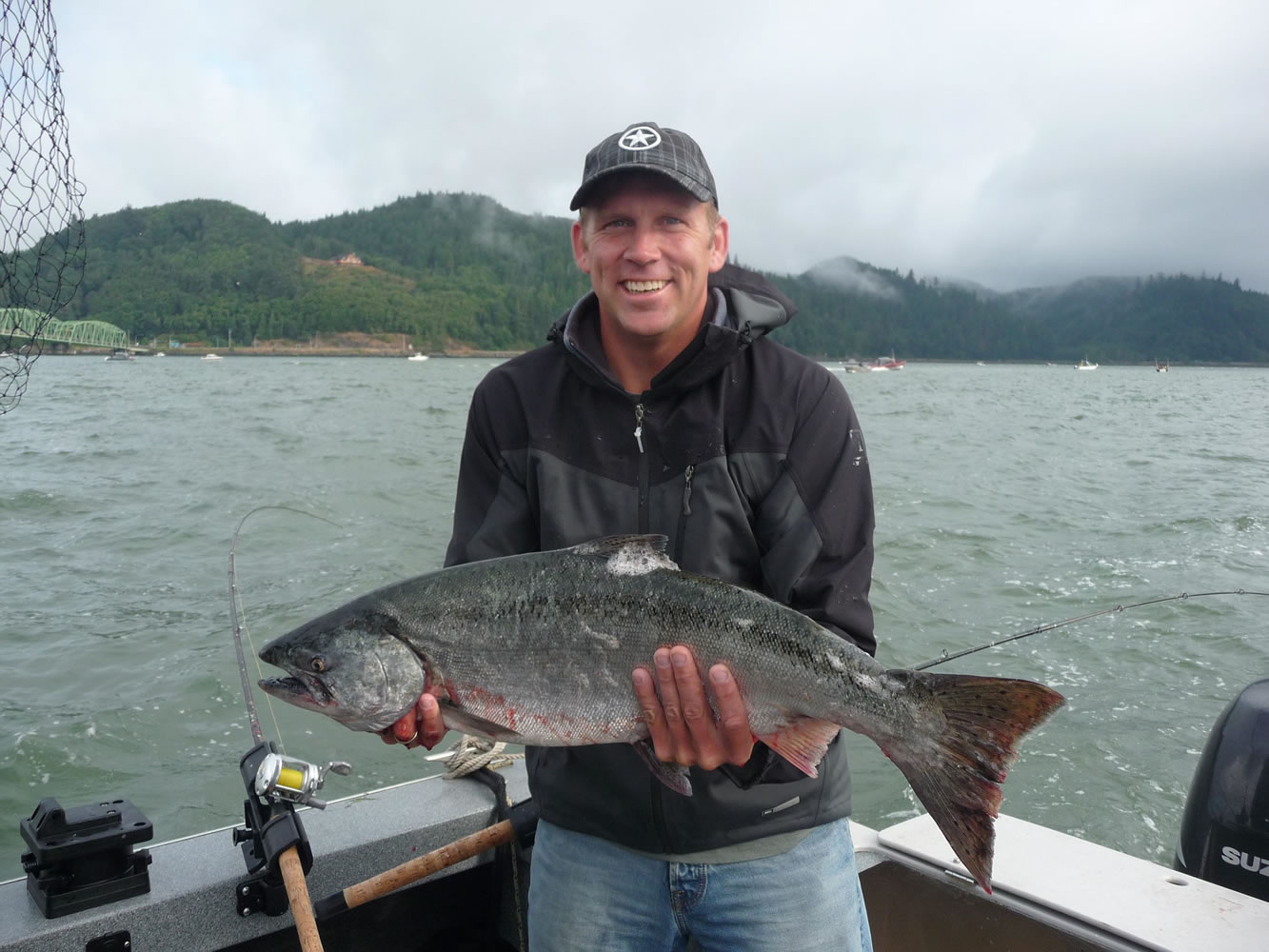Veteran guide Terry Mulkey says this will be a good summer for weekend-only anglers fishing for salmon in the popular Buoy 10 season at the mouth of the Columbia River.
“We’re really lucky this year,” Mulkey said. “All the major good tides fall on a weekend. It doesn’t always happen that way. Sometimes it’s in the middle of the week.”
The best tides for chinook fishing at Buoy 10, the name given to the lower 16 miles of the Columbia River from red Buoy No. 10 upstream to Tongue Point, are ebb tides in the morning with an difference of less 5 feet between high and low, he said.
Trolling down river works best on the soft outgoing tides.
The first good tidal cycle starts Friday, with high water at 7:56 a.m and an exchange of 4.8 feet, he said. On Saturday, the exchange is 4.1 feet and 4.0 feet on Sunday.
Other weekends with good tides are Aug. 21-23 and Sept. 5 through Labor Day, Sept. 7.
“If I only had one weekend to fish, it’d be that weekend of Aug. 22 and 23,” Mulkey said at a seminar last week.
The difference between high and low tides are only 4.2 feet on Aug. 21, 3.3 feet on Aug. 22 and 2.8 feet on Aug. 23.
Anglers got off to a good start Saturday and Sunday at Buoy 10, especially for coho.
When fishing starts off early, it often means the whole season will be good, Mulkey said.
Mulkey fishes with 65-pound-test braided line on his reels, with leaders of 40-pound-test Maxima Ultragreen or Fluorocarbon. His leaders are 45 to 50 inches and his droppers about 12 inches.
He used to fish with 8-foot leaders, but has shortened up.
“You lose fewer fish with shorter leaders,” he said.
Mulkey said he prefers to fish with Delta Divers.
“I prefer divers because of less tangle with them, letting out and not tangle with the rest of the guys in my boat…I hook them up direct. I don’t put any line in between them (the diver and flasher).
But he does switch over to fishing with lead when trolling with an incoming tide.
“When trolling with the current on an incoming tide, the diver is right behind you, can’t get to the bottom, it just won’t dig,” he said. “In that situation, switch over to lead.”
Mulkey said his favorite flasher is a Big Al’s Fish Flash in the color “High Tower,” which is aurora green on one side and pearl on the other.
With the warm water temperatures, Mulkey said he believes spinners will be productive this year at Buoy 10.
He does not brine his bait because he uses so much of it guiding. But with the price of bait, he suggested anglers salt theirs.
“If are down there and you want to keep your bait from day to day, salt them down. Use your fresh bait first, then use your salted bait for backup.”
Guide Bob Toman said fishing at Buoy 10 is largely about finding the right trolling speed.
“The speed you troll is most important,” Toman said. “You’ve got some complicated currents. You can’t go off your GPS depth finder, you can’t go off how fast everybody else is going. You’ve got to go off what kind of angle you’ve got on your line.”
Getting the speed right is tricky.
“Because of the way the currents are going, it’s hard to get your spinner to go the right speed — it’s either going too slow or too fast,” he said. “I drive my throttle with my fingertips. You have to have your motor tuned real well and everything lubricated so there’s no stickiness.”
Although braided line transmit vibrations faster, Toman said he likes to use monofilament at Buoy 10 when with a boat of other anglers.
“I really don’t think the fish like to swim through braided line, so, because of that, the guys on the bow rods catch all the fish because the fish don’t like to go through the vibration.”
Red-and-white is his favorite color of spinner. It’s also important the spinner rotates a bit erratically.
“You do not want a symmetrical spin,” Toman said. “It needs to be asymmetrical. If you’re using a spinner, and you can’t see it on your rod tip, it’s probably more symmetric than it should be.”
Toman said he loves to fish with spinners, but some times bait works better.
“Some years they like herring better the whole season, other years they’re biting spinners,” he said. “So, you can’t go ‘I’m going to be a spinner fisherman this year,’ because they may not bite them. But, if they are biting spinners, you can throw your herring away.”
Mulkey said it is always important remember the Columbia River estuary can be a rough place in a boat.
“Buoy 10 can be a very, very dangerous place if you don’t pay attention to weather, swell, tides,” he said.
Everybody needs a VHF radio in their boat, Mulkey said.
“Your cell phone will not get you in in the fog. If you are disabled, in a crab buoy, ran out of gas, who knows, if you get hit by another boat in the fog. You got your cell phone and the Coast Guard says where are you at. You don’t know. If you get on your VHF radio and you’re talking to them they can triangulate and find you by the signal of your VHF radio.”




